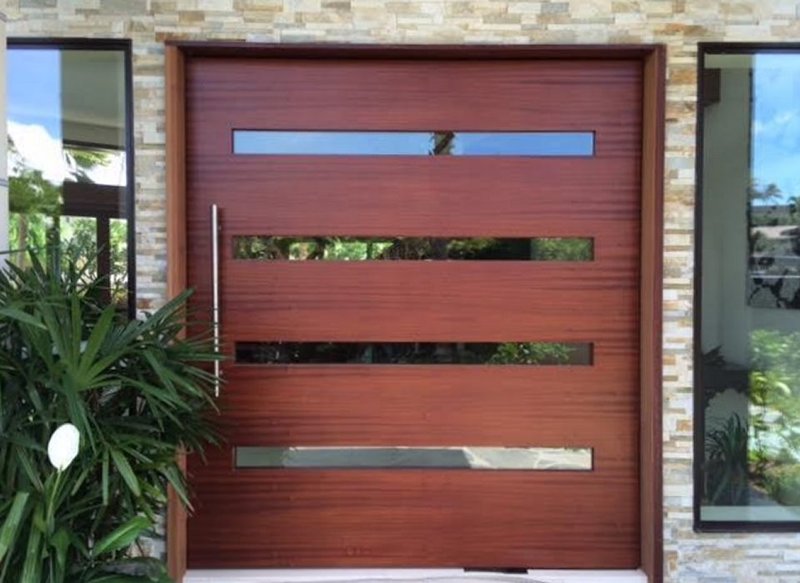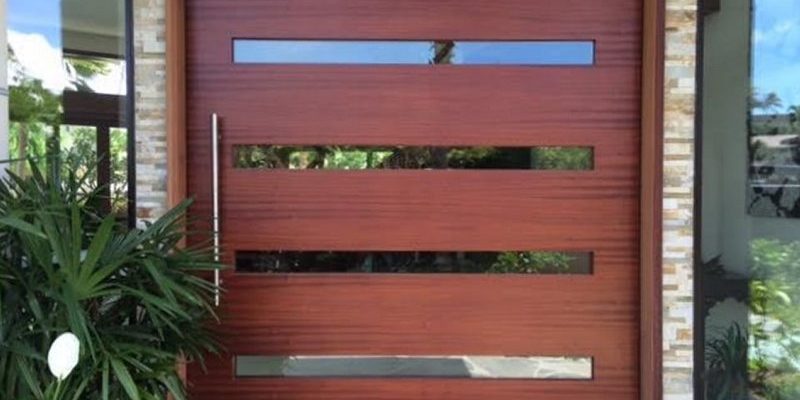
It’s not just about looks, either. Exterior door hardware—whether it’s a Kwikset deadbolt, Schlage lever, or a standard knob from your local hardware store—is supposed to keep your home safe. If you can feel the hardware moving around, it’s worth figuring out why. Don’t worry if you’re not handy (or if tools intimidate you). Let’s break down what’s going on and what you can do about it.
What Does “Excessive Play” in Door Hardware Mean?
Before we get into the nitty-gritty, let’s clear up what “excessive play” actually means. In simple terms, *play* is the amount a handle, lever, or lock moves before it actually does what it’s supposed to do—like open the door or engage the lock. Think about a loose joystick when you’re playing a game; it wiggles side to side before it does anything on screen. That’s the same sort of dead space we’re talking about here.
Usually, a little play is normal. Your hardware isn’t designed to be frozen in place; it needs some movement in order to function. But when there’s too much slack, it can feel like your door hardware is on its last leg. This isn’t something you want to ignore, especially if it’s on an exterior door. A lock or handle with excessive play can mean less security, more wear and tear, and a higher chance something fails when you need it most.
Honestly, a solid-feeling handle isn’t just about peace of mind—it’s about real everyday comfort. Closing your front door should feel firm, not like you’re wrestling with a cheap toy. If you notice your Kwikset handle, Yale smart lock, or even your old-school deadbolt wiggling more than usual, it’s definitely worth digging into the cause.
Common Causes of Loose Exterior Door Hardware
Most exterior door hardware develops excessive play for a handful of reasons, and some are a lot simpler to fix than you might think. Let me walk you through the usual suspects so you get a clear sense of what’s happening behind the scenes.
- Loose Screws or Fasteners: Over time, screws inside your door hardware can start to back out. Maybe they weren’t tightened enough from the start, or maybe just years of opening and closing wore them down. If your handle or deadbolt wobbles, this is often the easiest place to check.
- Worn Out Internal Components: Door hardware—especially the stuff you grab and twist every day—has little parts inside called spindles, cams, and springs. Think of these like the gears inside a watch. Once they’re worn or bent, the handle or lock doesn’t engage smoothly and starts to wobble.
- Improper Installation: Sometimes hardware isn’t paired properly with the door, or the holes don’t line up quite right. Maybe you swapped out a knob for a lever, or tried to upgrade to a smart lock. If something isn’t synced up—like the latch not sitting flat in the door, or the screws not grabbing wood—you’ll feel that “play” every time you use it.
- Wear in the Door or Frame: It’s not always the hardware’s fault. Doors swell and shrink with changes in weather, or just from years of use. The wood around the latch or strike plate can get loose, causing the whole thing to move more than it should.
It can even be a mix of these. Don’t be embarrassed if your door’s hardware looks perfectly fine but feels awful; even high-end brands like Schlage or Kwikset can get wobbly with age or weather.
How Loose Door Hardware Affects Security
You might be wondering, is this just annoying, or is it actually dangerous? Here’s the thing: *excessive play* in your exterior door hardware isn’t just a cosmetic issue. It can be an open invitation to security problems.
When handles, locks, or deadbolts have too much slack, they don’t sit tightly against the door. This gives would-be intruders a better shot at forcing them open. Think about trying to pry open a stuck paint can—the looser the lid, the easier it pops off. The same idea applies here.
Not only that, but loose locks and latches often don’t code or sync with their strike plates as tightly. This means:
- The lock bolt or latch might not hold fully inside the frame, making it easier to kick or pry open.
- Smart locks (like those from Yale or Schlage) might not align correctly, causing them to fail to pair or reset.
- If you’re troubleshooting repeated jams or battery drain, excessive play can be part of the problem—it puts strain on the locking mechanism every time you use it.
So, while some movement is normal, anything that feels “loose” or unstable should be fixed sooner rather than later. That way, your front door does its most basic job: keeping you safe.
How to Diagnose the Cause of Excessive Play
Let’s say you grab your door handle and feel that telltale wiggle. What now? The first step is to figure out exactly where the play comes from. Here’s a step-by-step approach to troubleshooting:
- Start at the Handle or Knob: Try wiggling just the handle. Is the movement only in the handle, or does the whole lock and plate seem loose?
- Check Fasteners: Grab a screwdriver and see if the screws holding the hardware together are snug. If not, tighten them and see if that fixes the problem.
- Test the Lock/Latch Action: Turn the knob or use the key. Notice if the *play* is only before it engages, or if it also happens while turning.
- Inspect Internal Parts: If you’re comfortable, remove the hardware from the door. Look for stripped screw holes, bent spindles, or broken springs inside (you might see little plastic or metal parts that shouldn’t move independently).
- Examine the Door and Frame: Make sure the area around your hardware is solid. Press around the latch and strike plate—if the wood moves or flexes, you might need to repair the frame itself.
Sometimes you’ll find more than one issue. For example, you could have both a loose screw and a worn spindle. Don’t get discouraged—most causes of excessive play are simple to spot with a little patience.
Fixing Loose Door Hardware: Step-by-Step Solutions
Once you know what’s wrong, the fix is usually straightforward. Here’s how you can tackle each of the most common causes:
- Tightening Screws: Use a screwdriver to snug up all exposed screws on the inside and outside of the hardware. Don’t overdo it—too much torque can strip the hole.
- Repairing or Replacing Worn Parts: If you see a bent spindle or broken spring, most brands sell replacement parts. For popular options like Kwikset or Schlage, you can find part kits online or at hardware stores. Swap out any worn or broken pieces, making sure everything lines up properly when you reassemble.
- Addressing Wood Damage: If screw holes are stripped, fill them with wood filler or glue in a wooden dowel, then re-drill. If the frame is soft or rotted, you may need a more serious repair, like a new strike plate or reinforcement plate.
- Reinstalling the Hardware: Sometimes, just removing and re-pairing (reinstalling) the hardware correctly solves the problem. Make sure all parts sync up and sit flush with the door’s surface.
If you’re stuck or worried about messing things up, don’t be shy about calling a locksmith. Sometimes, especially with smart locks or complicated deadbolts, a professional touch can save you hours of frustration.
When Should You Replace Your Hardware Instead?
Some hardware just isn’t worth saving—especially if it’s cheap, corroded, or older than you are. Here’s a short list to help you decide when it’s time to upgrade instead of repair:
- Repeated Problems: If your handle or lock keeps working loose every few months, something deeper is probably wrong. Constant troubleshooting wastes your time and doesn’t solve the basic security problem.
- Severe Wear or Damage: If you see cracks, corrosion, stripped screw holes, or bent internal parts that can’t be reset or re-paired, it’s time for a fresh start.
- Security Concerns: Older locks may not meet modern security codes. Upgrading to a newer system—especially a smart lock that pairs with your phone—can be a huge step up (and they often have better, tighter hardware by design).
- Style or Compatibility Upgrades: If you’ve remodeled or want a new look, switching from a knob to a lever, or upgrading the finish, is a great excuse to swap out old, wobbly hardware.
A universal fit lock from a trusted brand can make installation easier and help you avoid future issues. Just double-check compatibility with your door’s thickness and prep before you buy.
Preventing Hardware Play: Maintenance and Best Practices
Now that you know how to fix excessive play, let’s keep it from coming back. A little maintenance goes a long way toward keeping your exterior door hardware feeling solid and secure.
- Check Screws Regularly: Every few months, walk around your exterior doors with a screwdriver. A quick tighten here and there can prevent headaches later.
- Lubricate Moving Parts: Use a graphite spray or a lubricant recommended by your lock’s manufacturer to keep everything moving smoothly. This helps the internal parts last longer and reduces wear.
- Avoid Slamming Doors: This might sound obvious, but slamming speeds up the loosening process. Teach kids (and grown-ups) to close doors gently.
- Replace Parts as Needed: If something feels off—like a sticky latch or a wobbly handle—don’t ignore it. Fix or replace the problem before it gets worse.
Sticking with major brands like Schlage, Kwikset, or Yale can make finding replacement parts or help much easier. Universal hardware can work, but always check if the code and reset process fits your setup.
Comparing Universal and Brand-Specific Door Hardware
There’s a world of difference between a cheap, universal fit knob and a brand-specific Schlage or Kwikset system. Here’s my take on the big differences, especially when it comes to troubleshooting play.
Universal hardware is tempting because it claims to “fit anything,” but those one-size-fits-all solutions can actually be the worst offenders when it comes to excessive play.
- Universal Hardware: These often use adjustable plates and longer screws, which can leave more room for movement. They might work in a pinch, but if installed loosely, they’re prone to resetting issues, mismatched sync with your door thickness, and—yep—you guessed it, more play over time.
- Brand-Specific Hardware: Major brands like Kwikset or Schlage engineer their locks and levers to code with exact specifications. They’re usually tighter, sturdier, and have better troubleshooting support if something goes wrong.
If you’re all about quick fixes or renting, universal might be fine. But for your main entry door—where you want the least play and best security—go with a solid brand that matches your door’s style and thickness.
Final Thoughts: Don’t Ignore Excessive Play in Your Exterior Door Hardware
At the end of the day, *excessive play* in exterior door hardware might seem like a minor annoyance, but it’s really a sign your door isn’t as secure—or as smooth—as it could be. Whether you’re dealing with a loose knob on your old back door or a wobbly Schlage smart lock, don’t brush it off. Take a few minutes to check for loose screws, worn-out parts, or even damage to the door itself.
Fixing most causes is pretty simple, and with a little effort, you can get your door feeling as solid and secure as the day it was installed. If your hardware is too far gone—or you’re craving an upgrade—don’t hesitate to replace it. Honestly, a firm, steady handle is something you’ll notice (and appreciate) every single day.
